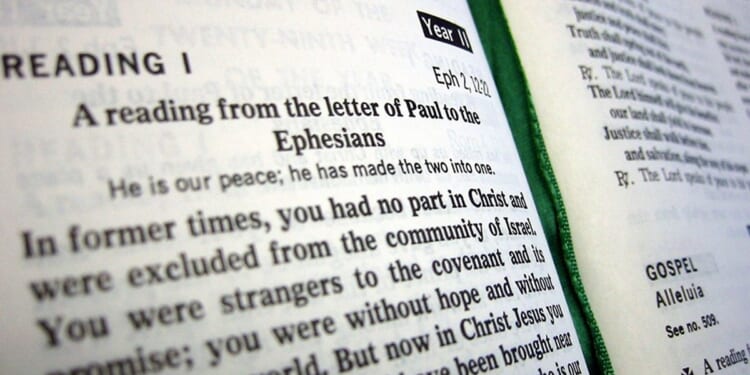Jeremiah 23.1-6; Psalm 46; Colossians 1.11-20; Luke 23.33-43
TO REFLECT on Christ the King, I am taking a single verse from Luke’s Gospel (23.38), together with the other Gospel records of the inscription on the cross. But, first, a fascinating fact that the Bible commentator Joseph Fitzmyer points out in his commentary on Luke: “The inscription on the cross is the only thing we know of which was written about Jesus during his lifetime.” If that is not a reason to pay scrupulous attention to all four versions of the inscription, I do not know what is; for this notice, which could seem like nothing more than an administrative label, is the very first proclamation of the Good News.
For the Jewish people, having a king had begun as an ambition, subsequently transformed into historical reality. After that, through battle and division, disaster and exile, it faded from history, and morphed instead into a dream of fulfilment in the unknowable future. There was never a question, for God’s ancient people, of separating powers into something like “Church” and “State”. In Jewish history, the king was a gift granted by God to his people. Kingly power was God’s power, delegated to an earthly mortal — like a bishop’s power to celebrate the eucharist being delegated to a priest.
All four canonical Gospels record the existence of the notice. Each version differs in detail from the others, but they all agree on the key point, the Good-News-in-a-sentence: a public proclamation that Jesus is “the king of the Jews”:
Matthew: “Over his head they put the charge against him, which read, ‘This is Jesus, the King of the Jews’” (27.37).
Mark: “The inscription of the charge against him read, ‘The King of the Jews’” (15.26).
Luke: “There was also an inscription over him, ‘This is the King of the Jews’” (23.38).
John: “Pilate also had an inscription written and put on the cross. It read, ‘Jesus of Nazareth, the King of the Jews’ . . . ‘What I have written I have written’” (19.19-22)
Matthew adds Jesus’s name to the notice. He and Luke say that it recorded Jesus’s identity by drawing the reader’s attention in an emphatic way: “This is the king of the Jews”. Mark’s version is simpler. No name, no drawing of attention, just “The king of the Jews”.
John’s account of the notice is more than four times the length of the other versions (75 words, instead of a maximum of 17 in Greek) — too long to quote in full here. He pictures a whole scene, vivid with dialogue like a stage-drama, including aspects that the other Evangelists do not record. In place of a simple factual record of the fixing of the notice, he records a to-and-fro tussle between Pontius Pilate (who embodies Roman authority) and the chief priests (who embody the Jewish religious authorities).
Committees are probably the worst environment imaginable in which to draft and edit a piece of text into a final form. Ask any member of the General Synod. The chief priests want Pilate’s wording altered, to mark a separation between what Jesus claimed about himself, and what is, for them, the truth about him. But Pilate refuses. His reply to those grumblers is one that I sometimes recall if I look at some piece of writing which I did years ago. “What I have written, I have written” is a way of acknowledging that the act of writing is in the past, and the writing itself is now an atom in the fabric of history, a mere witness of a sliver of time, not — unlike the Bible — a text for all time.
Pilate means something different. He is not just baiting the chief priests. He is reminding them that, even though they have driven him into condemning Jesus, he retains the power and the moral freedom to assert his reading of the event. They leave him (as he sees it) with no choice but to crucify. But he has seen through them, and the notice proves the fact. As another commentator puts it, “Even as they force Pilate to heed their calls to crucify Jesus, Pilate certifies Jesus’s sovereignty over them.”
In the Synoptic versions, the notice looks like a spiteful joke. But when we add in John’s version, its true nature is revealed. “The king of the Jews” is a written record, revealing the identity of God’s own Son to humankind: truly the First Gospel.
















